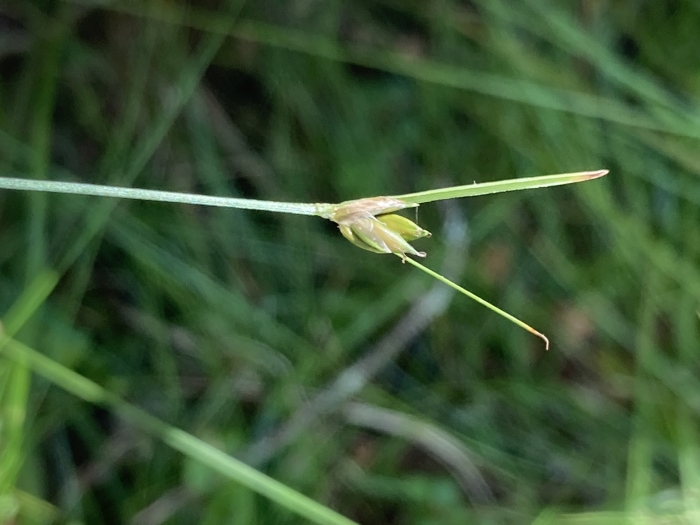Three-Seeded Sedge
(Carex trisperma)
Three-Seeded Sedge (Carex trisperma)
/
/

er-birds
CC BY 4.0
Image By:
er-birds
Recorded By:
Copyright:
CC BY 4.0
Copyright Notice:
Photo by: er-birds | License Type: CC BY 4.0 | License URL: http://creativecommons.org/licenses/by/4.0/ | Rights Holder: er-birds | Publisher: iNaturalist | Date Created: 2021-07-24T19:23:06Z |






















Estimated Native Range
Summary
Carex trisperma, commonly known as Three-seeded Sedge, is a perennial herbaceous plant native to cool, moist, acidic bogs and wetlands within northern coniferous and mixed forests. It is found in Canada, Greenland, and the northeastern United States. This sedge typically forms clumps reaching 20-60 cm in height and spreads slowly by rhizomes. Three-seeded Sedge has narrow, grass-like leaves and produces inconspicuous greenish-brown flowers in late spring to early summer. The flowers are followed by distinctive three-seeded, beaked fruits that give the plant its common name.
Three-seeded Sedge is valued for its ability to thrive in wet, acidic soils where many other plants struggle. It is often used in naturalized plantings, rain gardens, and as a ground cover in moist, shaded areas. This sedge prefers partial to full shade and consistently moist to wet soil conditions. It is not drought-tolerant and requires a habitat that can provide adequate moisture. While not particularly prone to diseases or pests, it can suffer in conditions that are too dry or sunny. Three-seeded Sedge is not known for being invasive and is a beneficial addition to native plant gardens, providing habitat and food for wildlife.CC BY-SA 4.0
Three-seeded Sedge is valued for its ability to thrive in wet, acidic soils where many other plants struggle. It is often used in naturalized plantings, rain gardens, and as a ground cover in moist, shaded areas. This sedge prefers partial to full shade and consistently moist to wet soil conditions. It is not drought-tolerant and requires a habitat that can provide adequate moisture. While not particularly prone to diseases or pests, it can suffer in conditions that are too dry or sunny. Three-seeded Sedge is not known for being invasive and is a beneficial addition to native plant gardens, providing habitat and food for wildlife.CC BY-SA 4.0
Plant Description
- Plant Type: Grass
- Height: 1-2 feet
- Width: 1-2 feet
- Growth Rate: Moderate
- Flower Color: N/A
- Flowering Season: Spring, Summer
- Leaf Retention: Deciduous, Semi-deciduous
Growth Requirements
- Sun: Part Shade, Full Shade
- Water: High
- Drainage: Medium, Slow
Common Uses
Low Maintenance, Water Garden
Natural Habitat
Cool, moist, acidic bogs and wetlands within northern coniferous and mixed forests
Other Names
Common Names: Eastern Threespike, Three-Fruit Sedge, Three-Seeded Bog Sedge
Scientific Names: , Carex trisperma, Neskiza trisperma,
GBIF Accepted Name: